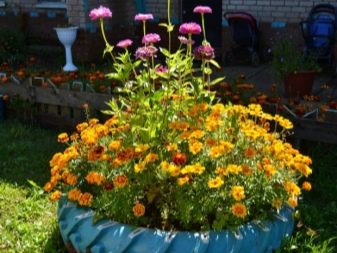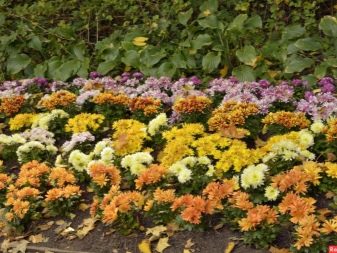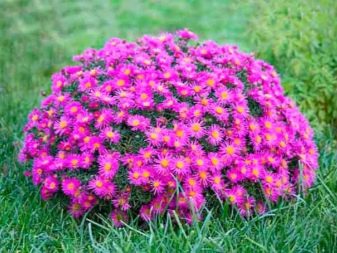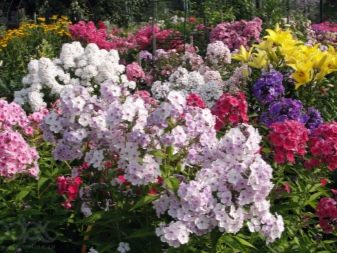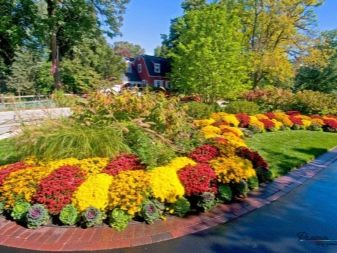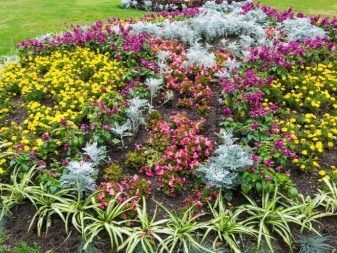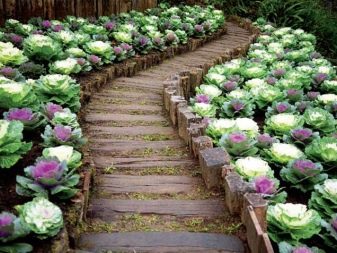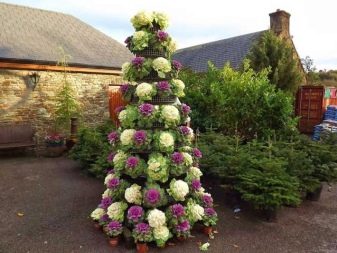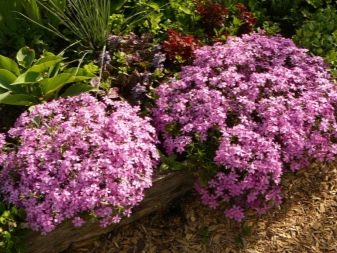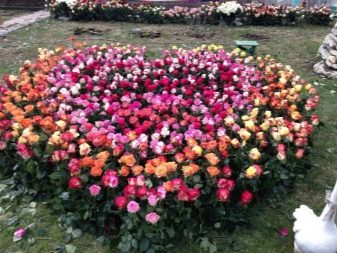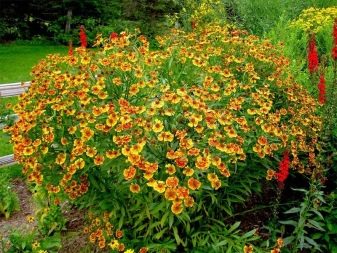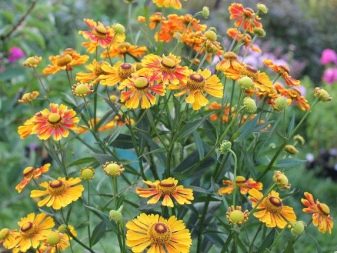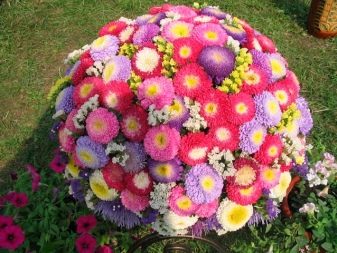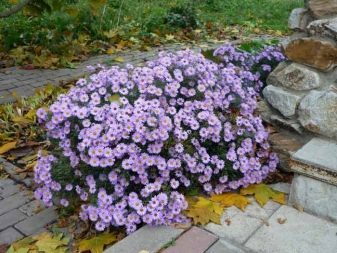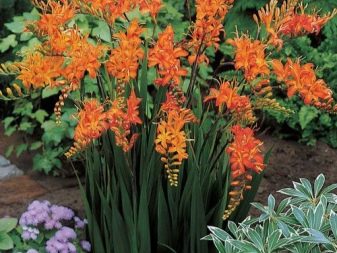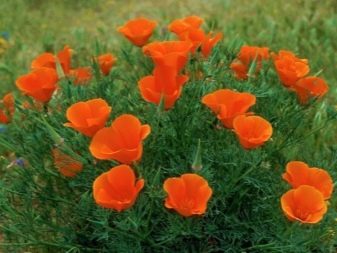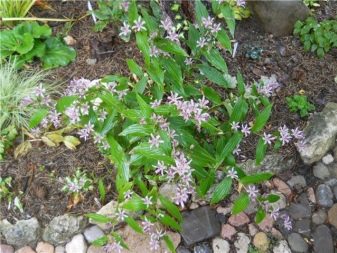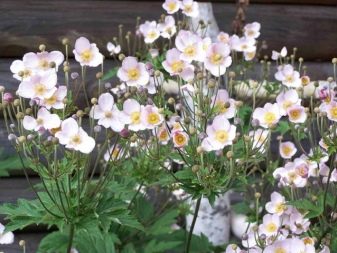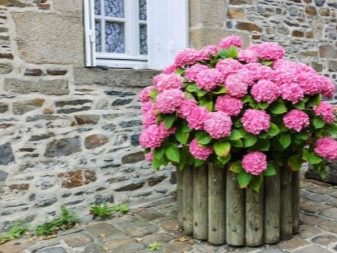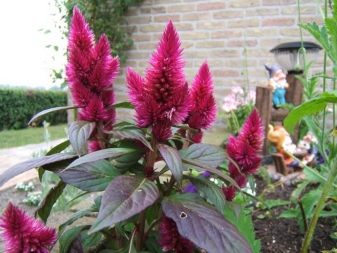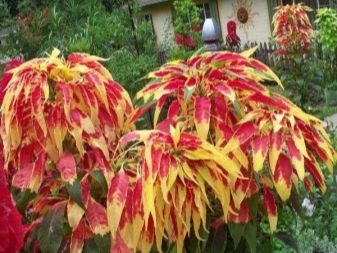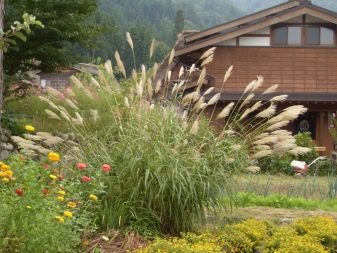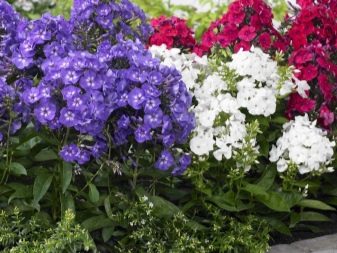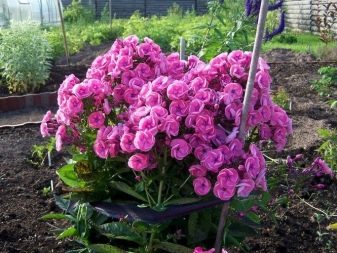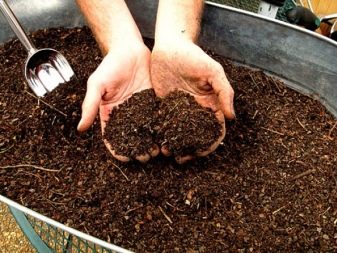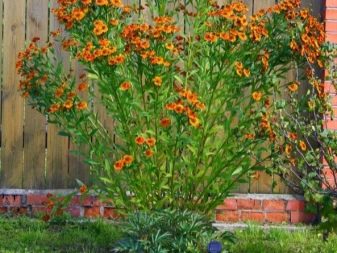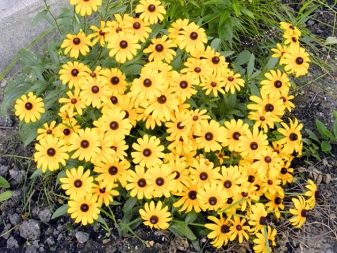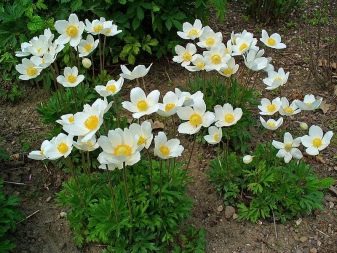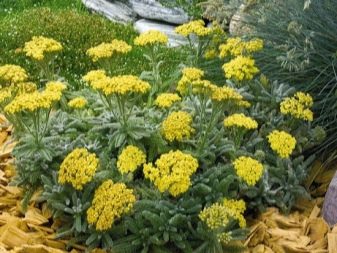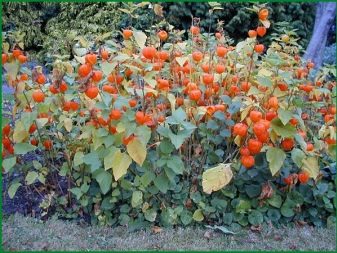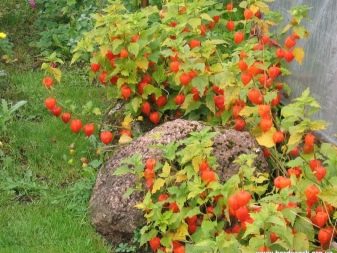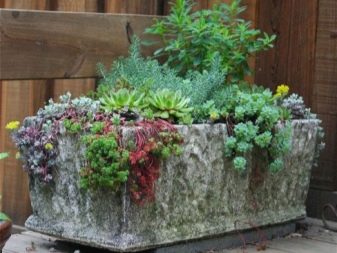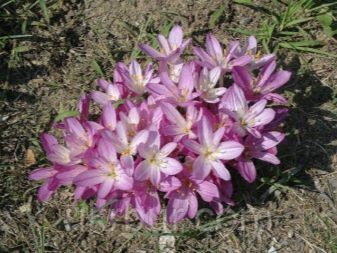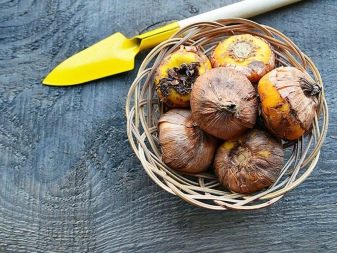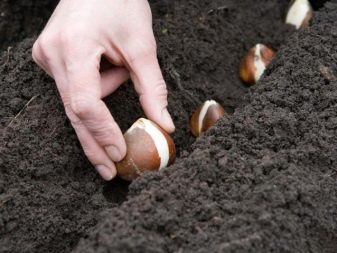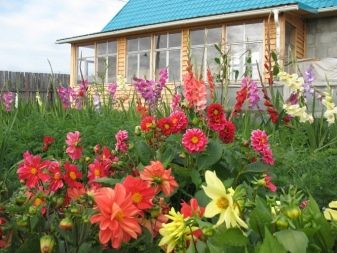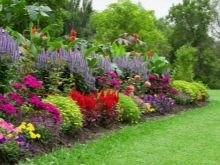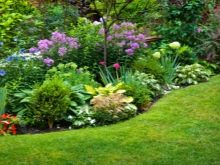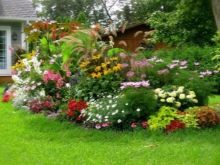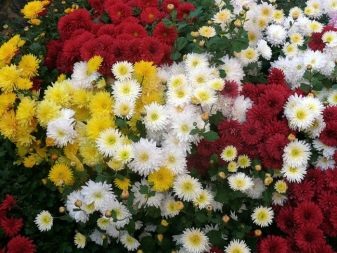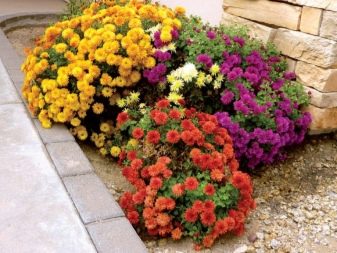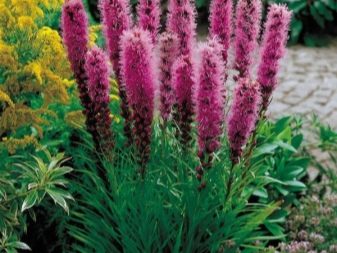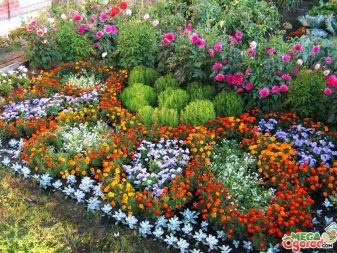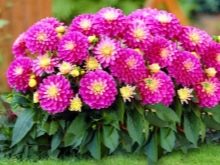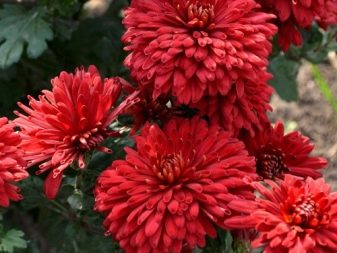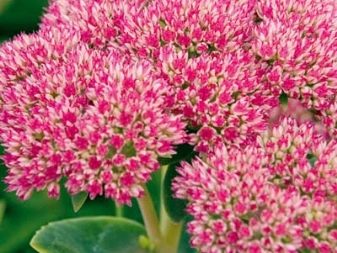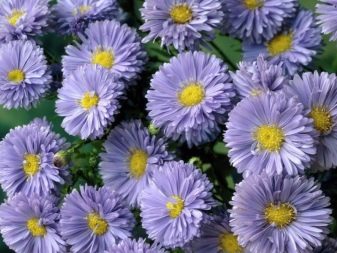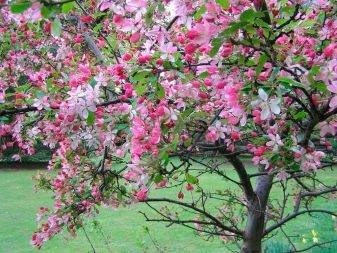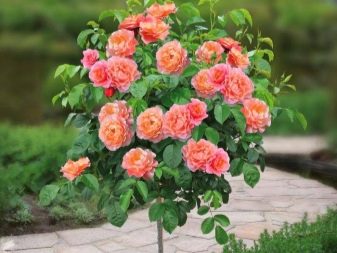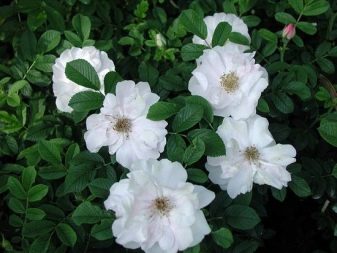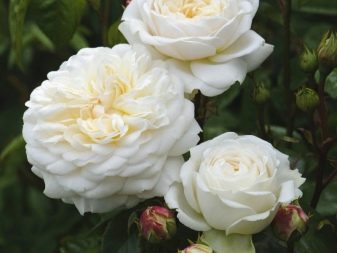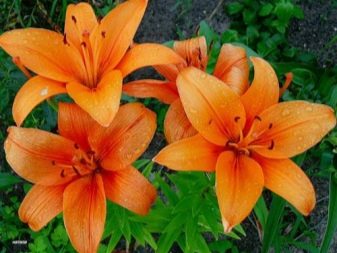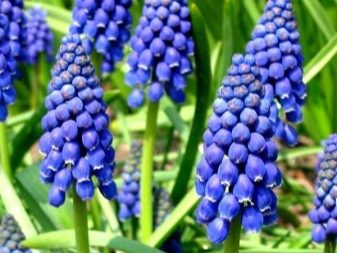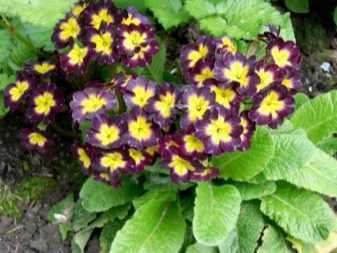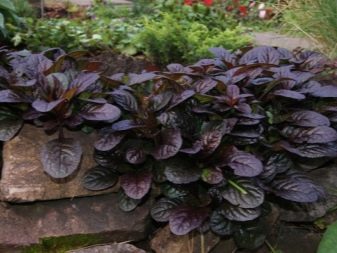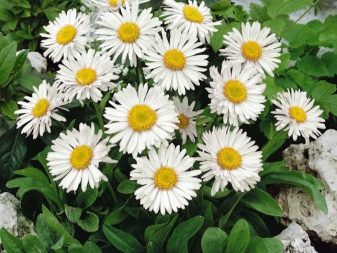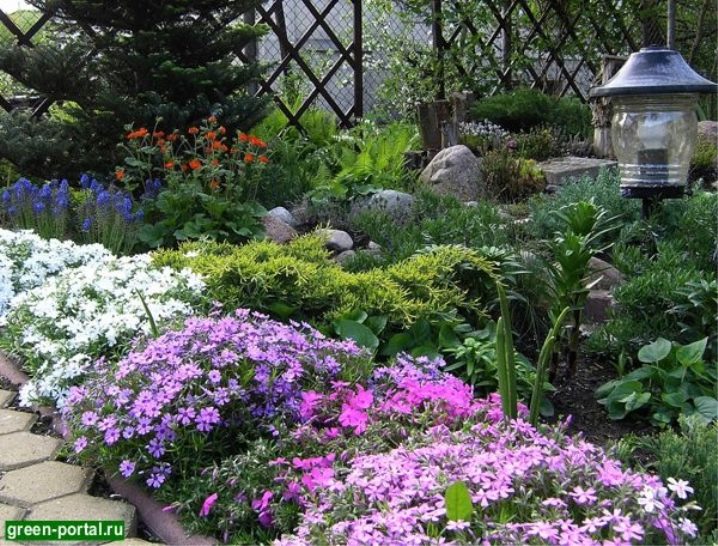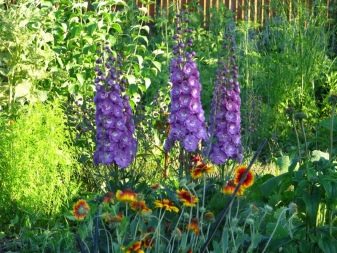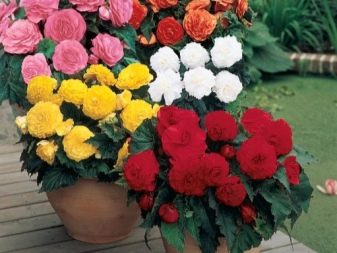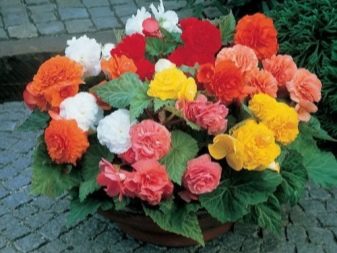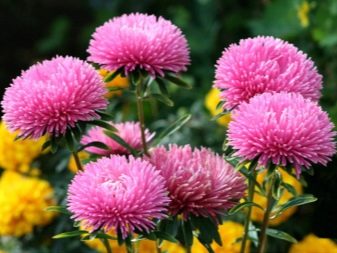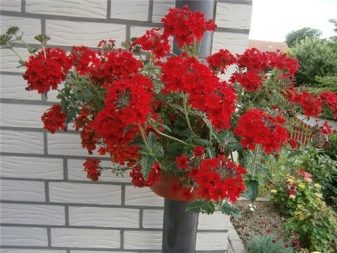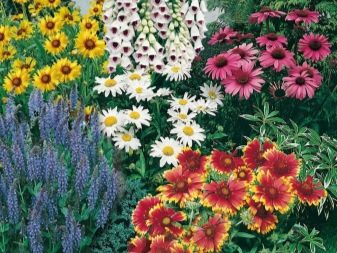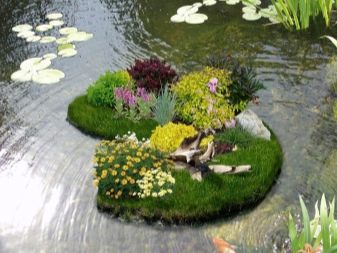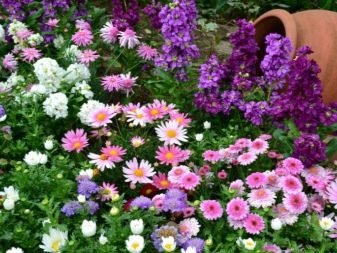We select plants for autumn flower beds
With the end of summer, a lot of elegant, lush vegetation still remains in the garden. Autumn flower beds open their bright buds until frost. To please yourself with their magnificence, when it is already fresh in the air, it is necessary to form September and October flower beds, carefully choosing the right set of crops for them.
Special features
The days are getting much shorter, the sun is warming slightly, in the morning there are dews and fogs are spreading. But it is precisely this period that turns out to be ideal for a whole collection of flowering plants.
They demonstrate on the plot near the house a remarkable abundance of shades.
This variety of autumn colors plays a huge role not only in design, but also fights depression, as psychologists believe.Saturated contrasting colors of the flower bed seem to return the summer, and with it positive emotions for the person.
To get strong and ready to bloom plants, professional gardeners recommend growing autumn "soloists" not only in the flower garden, but also in pots. When summer plants begin to wither, free up places in mixborders and rabatka, the strengthened bushes of autumn trees will fill the areas of flower beds.
As a rule, autumn crops are not capricious, they calmly refer to temperature drops and light frosts. Some of them, for example, ornamental cabbage, are ready to grow almost the whole of November, they are so calm in the frosts.
In a relatively warm September, you can extend the life of plants such as phlox. If you regularly pick off wilted buds, plants throw out more and more new buds. It is worth taking the drawing of the flowerbed seriously, because flowers in the fall will be the main designer's garden revival.
What are common?
Autumn, as it turns out, is chosen for flowering by many plants known to all, but rarer names cultivated by connoisseurs of floristic exotics are no less popular with amateur gardeners.
The Queen of Autumn is considered to be the chrysanthemum. A huge number of varieties of culture causes an infinite number of flower shapes and colors - burgundy, white, yellow, orange, pink, lilac. The inflorescences on lush, spreading bushes keep to the frost.
With cool days comes the turn of delicate, fragrant autumn roses. Late varieties of Orange Triumph or Irish rose have gained popularity among fans of subtle shades of tea, lemon, cream, pale lilac. There are rare, almost brown, and purple specimens.
Landscape designers like round, completely covered with flowers of helenium bushes. It is original in color and has options from bright orange to brick brown. With delicate greenery, the flower creates a surprisingly original decoration of the flower bed.
Rarely what September-October flower garden will do without asters, as well as their more modest relatives - September. The first have classic tones - red, purple, white. The latter are striking celestial and purple hues, and so bright that the depth of color fills in the perception of the relative simplicity of the flower.The bush looks amazing!
The fancy accents in the garden are late dahlias. High, especially spectacular in single plantings, they cause admiration of long-petal flowers - large, scarlet, sunny, nectarial shades.
Red and orange crocosmia with leaves and swords are good in autumn flowerbeds. These tall flowers look especially original as a flowerbed with perennial purple and purple asters.
In rock gardens, hedges unobtrusively will take its rightful place goldenrod, which will be a good companion for purple rudbeckia or yellow coreopsis. All these flowers are strong, unpretentious and create a summer mood in the autumn garden. In addition to them, the colors are no less saturated compared to summer.
Beginning summer residents consider a win-win option to land a zinnia closer to September. Care for her does not need almost no, but the plant is elegant, powerful, red-crimson, orange, white shades. It will not fade to the very cold, unless excessively wet weeks come, as is often the case in October.
Blue, white and lilac arrows of the delphinium refresh the autumn glade well.Having flowered for the first time in May, in the fall, the delphinium repeats the ejection of buds, delighting fans with more vivid and juicy strokes. True, it happens in southern latitudes. And in the middle lane, the plant smoothly transitions to bloom in autumn, almost without slowing down the summer pace.
Graceful sparks of bright lemon color light up in the autumn Escholzia - Californian poppy. If the weather is dry, the flower after the flower opens its cute "funnels" again and again. Every two or three days there are new poppies.
Such unpretentious long-livers as ageratum, taghetis secured a permanent “registration” on simple flower beds. They are good for bordering flowerbeds, and for the first rows of autumn mixborders.
In the fall, gardeners who seek to diversify a popular bouquet with new species get more sophisticated color combinations. The golden immortelle, lilac-pink iberis, and lilac colhicum beautifully fit into the September flower beds.
In the shade, the summer residents give pink-white-blue tricyrtis their charm. The absolute masterpiece in the autumn flowerbed is the Japanese anemone.
These plants are like spring primroses,therefore beautifully discord with the September long-livers.
Hibiscus pleases the eye with gramophone flowers; in the warm autumn, the whole bush is covered with new buds. Tropical palette - white, red, lilac shades.
Shrubs with bright hats and branches of flowers - hydrangea balls of different shades on one bush, look very impressive on the beds. As well as crimson heather and panicles of purple.
Undoubtedly, picturesque in the autumn bouquet amaranths. All three species - paniculate, tailed, tricolor - differ in amazing colors. Burgundy panicles are combined in a bunch and even from under the snow they demonstrate a non-obtuse fountain of colors. Amaranths give a certain stylistic relaxation to the flowerbed, bring notes of Provence to the classic flower garden.
All these collections of plants are well combined with decorative cereals - bututilhe graceful, reed with shaggy panicles are indispensable when decorating flower beds. Compact and original pattern of sharp leaves of the line. Silver-red miscanthus is only called cereal, but outwardly it is a very modern designer material for flower beds, in no way inferior in color to flowers.
How to care?
In order for later plants to have a rich palette, agrotechnical science requires that they be stopped for watering. An exception is made only for very young, recently transplanted bushes. Large flowering specimens like dressing with superphosphate and potassium sulphate, peat additive.
Features care autumn handsome men are different. For example, phloxes are very demanding on the ground, it must be fertilized, well-shed, and moisturized. If a penumbra is established on a bed of phloxes, this is the normal mode for these flowers.
The preferences of chrysanthemum are as follows: light soil over which the hoe walked properly. Fertilizing with organic fertilizers will only play on the intensity of flowering. The soil under the bush should be constantly watered. But the stagnation of moisture this plant can not tolerate. So the question of drainage will be very relevant. Since the chrysanthemum can bloom even after frost, you need to take care of its root system, constantly mulch the soil in order to avoid frost crust.
If the gelenium is provided with a well-lit area, it will continue to delight you with bouquets of new flowers in any autumn storms, including after prolonged rains and fogs.The same method of care applies to Crocosmia. Not afraid of the shadow and rudbeckia.
However, it is necessary to divide its bushes in about a year for the emergence of young flower stalks.
Very capricious in growing anemone. The soil must be regularly loosened, make organic fertilizer. Constantly lit area for anemone uncomfortable, she needs a shade. The yarrow, on the contrary, is calm in the dry season.
But in the fall it is recommended to water the plant to throw out more vivid colors. And be sure to break off fading heads to resume flowering.
For the "Chinese lantern" or Physalis, it is important to have a bright place and timely removal of weeds. Soil mixture he needs a neutral or weakly acid. High shoots are better to tie up to the supports in the color of the stems, to make mineral fertilizers, and the original orange-colored “toys” on the bush will give unusual freshness to the site.
Sedum first winter should be spent indoors, in a pot or in a greenhouse. Matured plant with spectacular purple flowers gardeners planted in the fall in a flower bed. Sediments certainly need a sunny place.But Kolhikum is ready to bloom in the shadows, but not in any way in the drafts. Zinnia, a favorite of gardeners, is not at all demanding on the weather. It will bloom even in the cold, unless it needs to be watered slightly.
The very same frost-resistant specimen is ornamental cabbage. If you want hardy cabbage to please you with elegant colors even at -10, cover the root system with sawdust or old leaves.
The list of autumn colors, which are pleasant to owners of country acres and city beds, is endless. In addition to those already mentioned in this article, in September-October begonia, fuchsia, oleander, verbena, sage, nasturtium, astilbe, host, some daylilies, and other beautiful plants bloom.
Care of them includes the following works:
- Large, overgrown bushes need to be transplanted and transplanted, then in the garden there will be many flowers.
- In the course of transplanting, update the roots - clean, remove the diseased parts of the bulbous so that the bulb does not become shallow and does not give weak buds.
- Dry and cover the rhizomes and bulbs of peonies, dahlias and gladioli in a cool cellar.
- Under the flowers that do not require transplantation, add potash phosphate fertilizers, dig the soil under the bushes.
- Focus on roses: they need not only fertilizer, but also accurate pruning and shelter for the winter.
In the flower bed before wintering you need to do such work:
- In early September, plant bulbous plants - daffodils, tulips. If you plant them in late September, cover with straw.
- Collect seeds from annual flowers to procure planting material for the next season.
- At a temperature of 0 - +5, remember clematis or other climbing perennials. Cover them up with their own sprouts by rolling them up.
- Cut greens from peonies and sprinkle the earth around the bushes with ash and sand. You can cover already in frost.
- Summer flowers also sow correctly in the fall. But calculate everything so that the seeds swell, but do not hatch.
How to arrange?
The “soloists” of the autumn flower beds are notable for the unrestrained riot of colors. It is not only blue, crimson, white, yellow bright spots, but also motley, speckled, striped. The element is sometimes close to a certain stage, bordering on tastelessness.
In addition, the stems, on which the elegant fragrant heads rise, tend to different lengths, often creating solid pile-ups. Therefore, it is necessary to focus on the correct color design of the September and October flower beds.
Experienced gardeners skillfully add several other species to one plant, depending on which ones bloom until autumn, which in autumn and how harmonious they are. Here the summer flower-bed smoothly “flows” into the pre-winter one.
The most tall bushes should be located so as to shade, and not to obscure small plants. Thick and sprawling bushes should not interfere with the beautiful look of single plantings.
If you form a flower bed of chrysanthemums and asters, then a competent decision will combine classic tall chrysanthemums as a background and New Belgian or New England asters as a cutting edge. Named variety of chrysanthemums gives a lot of greenery and beautiful, tightly-filled flowers. And these varieties of asters form large bouquets with a small height of the bush.
It remains to "solve" the problem of harmony of color. It is not necessary to "mix in" with yellow chrysanthemums purple or crimson asters. Take the pink high flowers and white, scarlet, burgundy - low. This will be a manifestation of good taste composer beds. In the flower garden it is important to take into account the traditional compatibility of coloristic fragments, including cereals, amaranths.
A horizontal flower bed, for example, of complexity, will look lively and unpretentious. About the perimeter is an orange goldenrod, the second tier is lower - saturated pink astilba.
In the center are white-red and white-crimson verbenas.
Proof of skill professionals, of course, is a flower bed of continuous flowering. Consider the option with an emphasis on the fall. Prior to this, the composition will include themes of spring (crocuses, daisies, primroses, viols), summer (grouse, gantries, early roses, liatris).
And here is autumn. A scattering of flowers will be bright, but not flashy, but harmonious. From perennials to the collection will get white carnations, burgundy echinacea, solar rudbeckia, red and pink begonias, repair-tea roses. Coriopsis (orange-yellow) and craspedin (lemon brown) will help to dilute them with flowers butterflies.
The flowerbed will not fall into a confusion of tones, it will do without blue and blue, but it will be perceived as festive and solemn. And the fragrance will remain until the frost.
Here is a sea of dahlias. In the fall, all their varieties bloom - peony, nymph, spherical, collar, needle.Dahlias are good in themselves, without interweaving into the flowerbed, so we can single out the third conditional theme - “proud posture”. For a spectacular flower garden, it is better to select yellow and dark-red specimens of needle-like dahlias, in combination with crimson and white nymphae and anemone.
Well, the autumn “prima donna”, of course, is personified by chrysanthemum. Let us dwell on the bronze and burgundy tones. Take a large-flowered one, let it be the main emphasis of our “defiant” flowerbed. It is appropriate to add to the chrysanthemum the “golden ball” variety blazing on Rudbeckia. And on the edge of the muffled this "fire" pink stonecrop.
A lovely continuation of this “off-season” parade will be a short, long-growing aster. It is sky blue azure our set.
For a more specific story about how to form a more characteristic flowerbed of all-season flowering, let us outline the scheme in as much detail as possible:
- Centre. We plant large perennials or annuals in the “head” place of the flower bed, and for originals we generally advise trying to place a tree - for example, a Japanese apple tree with falling branches and a waterfall of flowers and leaves. The height of an apple tree is twenty meters.
If you still choose flowers, it is better to give preference to the bushes of late roses.
- The middle. Retreating 50-60 centimeters from the trunk or rose bush, rooted white park roses. Their height is 60-70 cm, the flowers are not huge, 5-3 cm in diameter.
- Next row. Asiatic orange lilies, between them are spots of Armenian blue muscari. When a muscari loses flowers, its leaves remain healthy and bright green.
They go under the snow, maintaining the spring saturation tone.
- The final row. Primrose, creeping tentacle burgundy shade. This early pattern looks like a light cloud with a rainbow overflow.
So that in the fall, instead of spring “singers,” the later flowers took over, complementing the composition in the last row of the Pyrenean white aster. She will expel in September her inimitable "daisies", which will finish blooming only in November. For brightness, it is better to plant a purple daisy aster.
Beautiful examples
Autumn flower beds provide incredible space for fantasy landscape designers. Romantic look bright September bouquets in the strict stones. For example, multi-colored phloxes, planted in tiers in rock arias at the entrance to the house, give rise to a sense of celebration for guests who have just passed through the already faded garden.
As if weeping clusters will hang a goldenrod near the pond.By the way, all the compositions of autumn against the backdrop of artificial reservoirs are picturesque and elegant at the same time.
The most inventive designers planted autumn flowers with intricate patterns that are spread out with lush carpets along the entire plot. Roses are the backing of the scene. And in the foreground there is an ornament from round compositions of stonecrops, square inclusions of tsineraria, "pigtails" of vervains and balsamines.
The tall candles of a white, blue, purple delphinium in the background are “fired” with bright rockets. As “sparks”, when viewed from a certain position, are “carelessly” scattered in planting yellow marigolds and small white croaks.
With surprise you will find a joyful cascade of yellow, pink and burgundy Rudbeckia - the composition plays at different heights of the same plant.
The royal begonia in pots provides the front perception of the porch and windows. Nearby should be planted terry varieties of white, red and yellow. From a distance, it seems as if the flowers have just been doused with fresh paint, so saturated and “explosive” the tones they appear.
Everyone, without exception, cottagers will enjoy planting low-grade asters and highlighting them with special lights.Asters calmly relate to the artificial lighting of fragments of a flower bed, which is not the case with chrysanthemums.
They do not carry any other light than the sun.
Intricate look at the autumn cottage ampelnye landing, that is, hinged flower beds. In the various designs fastening to support, lattices, arbors, autumn alissum, a lavatora, a petunia feel comfortably.
In baskets and flowerpots, it is spectacular to put bright, snapdragons on the autumn lawn, for mounting. The “flowing out” of the clay pot and the “flowing” lobelia on the ground is also a bold discovery for the fading landscape of September.
Autumn gladioli create a very optimistic picture. Designers offer to plant them in groups or singly along the avenue, choosing the brightest colors - white with burgundy, pink with scarlet. In the "pair" with gladioli can "march" digitalis. The appearance of these beauties is unreal fresh in the picture of the predimer. High flowers in the fall compensate for the lack of powerful, bright plants.
Flowerbeds, butterflies and flowerbeds, garlands are beautifully assembled from undersized and unpretentious ageratum, salvias, escholtsii. Fans of the stone autumn garden will create a mood for themselves, “scattering” among the rounded geranium cobbles,terry calendula, astilba.
Great looks arch or bridge, hidden in the winding autumn roses. Connoisseurs of exotic erect even flowerbeds on the island in the middle of their summer ponds. Coreopsis, akalifu, carnations are planted on them in special containers. For disembarkation boxes are used, immersed in the soil of an artificial island on the dacha pond.
Thanks to designer finds, the garden is dyed with the most beautiful colors before diving into the winter. If you are attracted to this beauty, do not get tired of working and creating in the garden before the frost. All efforts will pay off many times.
On what the main mistakes are made when designing flower beds, see the following video.

